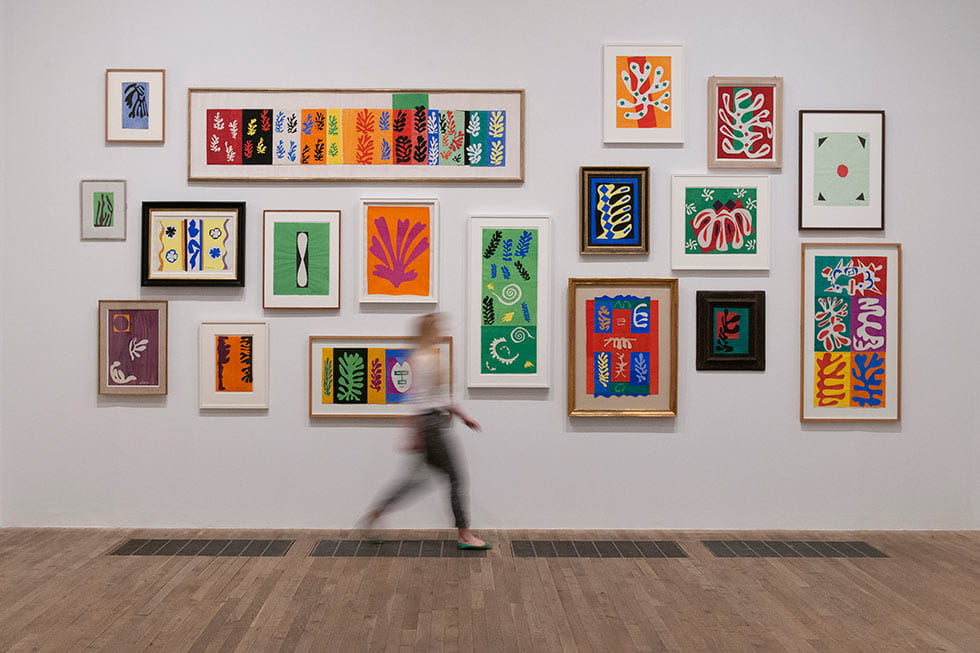A whiteboard in the room we do most of our work says, “Dissolve all limits!” The line, written by yours truly in fittingly-evanescent black, was a reminder to both self and team of our commitment to remaining open, playful, experimental, innovative—creative, in a word. This last week, our ambitions met reality.
Some context
What we worked on involved two distinct methodologies of research organization: exhibits and mapping. The result of the former approach to presenting knowledge should be familiar with anyone who has ever visited a museum, where often if not always a featured exhibition presents a curated collection of objects that together tell a story, make an argument, and/or speak to a broader idea. The recent Matisse retrospective at the MoMA is one such showcase. Richard Pryor’s Peoria is an example of an exhibit that has gone digital (but sadly, not viral, it seems), so to speak. Many other exhibits abound online, with varying degrees of quality in terms of scholarship, design, and execution. While collectively engaging with these cyber exhibits, we discussed what we liked and did not, all the while envisaging and sharing just how we might want an exhibit to look like, should we choose to create one for the Edward and Orra White Hitchcock Papers.

Afterward, we got to work on creating a mock-up of such an exhibit on omeka.net—an online platform for “[c]reat[ing] complex narratives and sharing] rich collections, …designed for scholars, museums, libraries, archives, and enthusiasts” as the site so states on its home page. The effort was good exercise in the sorts of skills an exemplary exhibit calls for during its production process: an ability to present information in an accessible, cogent manner (per the gallery text guidelines published online by the Victoria and Albert Museum, which my fellow interns and I read); proficiency with classificatory principles; and an eye for sensible and intuitive UI, to name but a few. It is that final itemized faculty that brought forth our first encounter with the limits of our work.
Facing the shortcomings of the field’s tools
“Open source” has never been a term I immediately associate with cool, forward-thinking, fetching, or any other positive attribute usually ascribed to brands like Apple, which privilege considerations of aesthetics in design and engineering operations (or so they tell us in marketing material). I do not mean to disparage, say, OpenOffice, whose pursuit of allowing all without the means or want to buy the closed system that is Microsoft Office in order to aim to create professional-grade documents could be called honorable, when I express a reluctance to use tools that advertise their open source credentials. It is simply a matter of fact that companies such as Adobe, Google, and other corporate heavyweights have the capital—both human and financial—as well as infrastructure to create powerful tools that have the capability of yielding an interminable amount of results. With an open source tool not unlike omeka.net, I feel limited. Indeed, this was a refrain I reiterated within the workplace, those around me can attest to. And my discontent over limits was not always directed at the aforementioned online exhibition publisher. I felt limited by activity designed to manage ideas raised in a brainstorming session without inhibiting inventiveness; I even felt limited by the clock (a painfully on-the-nose metonym for time itself), by the walls, by the seeming dearth of choices available at our disposal. Yet a recent discussion I have since had with my co-workers has helped me come to terms with the idea that this is the fundamental reality of scholarship, and in truth, life itself: enclosure. There is only so much available out there to academia and elsewhere—only so many experts, articles published, books written, conferences held, &tc. Dealing then with what one can do, possibilities seem less restrictive and more strengthening, insofar as, they establish a framework from which one can develop her own additions, his own insights.
Mapping, and beyond
Without waxing philosophical, I wish merely to convey in my talk of limits the kinds of problems that the process of “doing” digital humanities entails, and how one can resolve those problems with a shift in perspective. Take the other methodology we explored as another case study in the power of frameshifts: mapping. My initial exposure to mapping in DH came in the form of the HyperCities project, which aspired to “integrat[e] scholarship with the world of lived experience, [and] mak[e] sense of the past in the layered spaces of the present for the sake of the open future.” Suffice it to say, I was disappointed with how the concepts were carried out under such an ambitious banner. But, recognizing that scholarship is an ongoing conversation and by no means a static endeavor, that what one does can always be improved upon, I now approach the internship able to recognize that an ascent is all in the steps, a function — relevant with limits.
